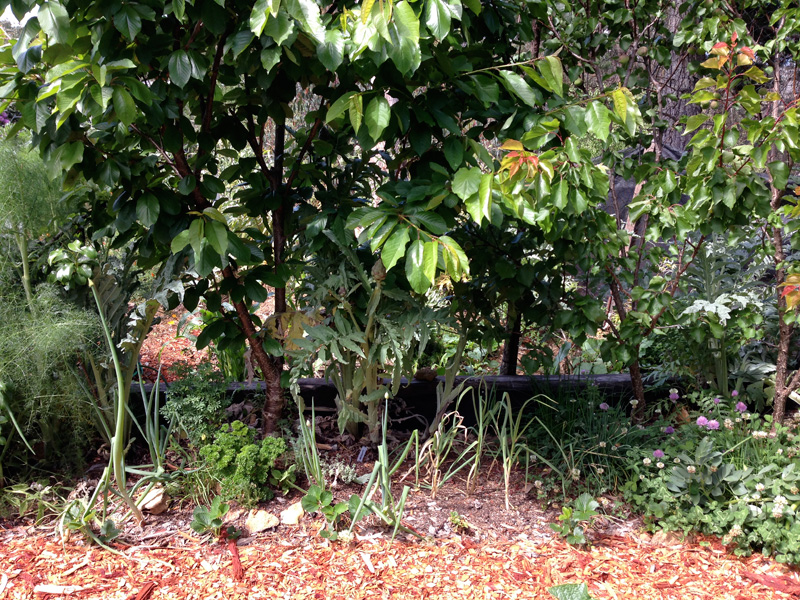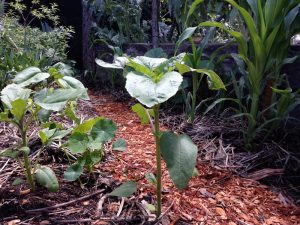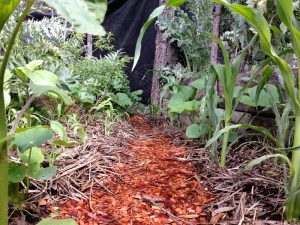You can grow pretty much anything in a hugel that you can grow in a conventional garden bed, but you need plan ahead.
Hugel characteristics
Although a tradtional or hybrid hugel increases the growing area of your garden, different sections of a hugel are not identical.
I divide each of my hugels into three zones:
- S
 unny side: good suntrap for longer maturing plants (such as cabbages and cauliflower). The base of the hugel provides better root stability for tall plants (such as eggplant and capsicum), and better water retention.
unny side: good suntrap for longer maturing plants (such as cabbages and cauliflower). The base of the hugel provides better root stability for tall plants (such as eggplant and capsicum), and better water retention. - Plateau: dryer, but deeper growing medium, better for root vegetables like carrots, beets and parsnip.
- Shady side: low growing plants will be shaded by plants on the top of the hugel. Good for protecting heat sensitive plants such as lettuce, dill, coriander, etc. In the middle of summer and with the sun directly overhead, the shady side gets plenty of good sun. The base of the hugel provides better root stability for tall plants (such as corn and tomatoes), and better water retention.
Garlic, onions, parsnip and carrots grow happily, but the coarse material close to the surface of the hugel can create crooked tubers and prevent garlic and onions from bulbing correctly. Plant in sunken hugels, or manage hugel construction (and maintenance) to accommodate their specific needs.
Fruit trees
For trees or shrubs over 1m tall, the hugel will not provide enough stability for the root system and they may blow over. Fruit tree roots can be damaged by the heat of the decomposing wood, so plant these adjacent to a hugel or using hugel stacks.
Vines with invasive root systems
Vines with invasive root systems, like raspberry, need to be planted in dedicated garden beds, using a physical barrier to prevent spreading.
I grow my raspberries in dedicated raised hybrid beds.
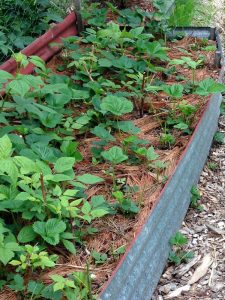
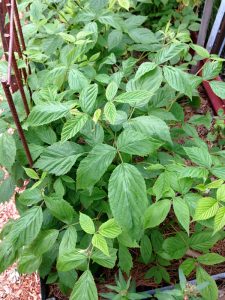
These beds are dug into the ground 30cm (1 foot), and lined with weed-matting to prevent the roots invading adjacent beds.
I then fill the beds with woody material, sticks and twigs, leaves, garden clippings, and dirt. I put down several layers of compost and planted the raspberry canes in this.
Plants that need to be blanched
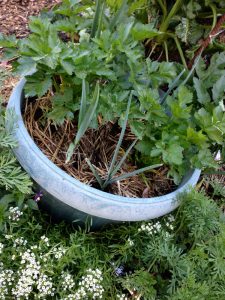 Vegetables such as celery, leeks and chicory are often blanched to keep them pale and tender. Blanching requires mounding up soil around the stems. The easiest way to grow these is in a trench which is back-filled as the plant grow, and therefore are not suitable for growing in a traditional or hybrid hugel.
Vegetables such as celery, leeks and chicory are often blanched to keep them pale and tender. Blanching requires mounding up soil around the stems. The easiest way to grow these is in a trench which is back-filled as the plant grow, and therefore are not suitable for growing in a traditional or hybrid hugel.
These are best planted in pots, sunken hugels, or a dedicated raised hybrid bed.
I grow my leeks and celery together in pots adjacent positioned at the end of the hugel. I place plastic tubes around the plants then backfill.
Invasive tubers
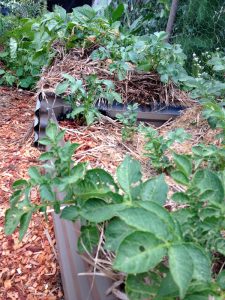 Plants with invasive tubers, such as potatoes or Jerusalem artichokes, tubers will invade the woody bed, and will be impossible to harvest or remove without destroying the hugel in the process.
Plants with invasive tubers, such as potatoes or Jerusalem artichokes, tubers will invade the woody bed, and will be impossible to harvest or remove without destroying the hugel in the process.
These are best planted in pots, sunken hugels, or a dedicated bed.
I grow my potatoes in dedicated raised hybrid beds, and potato cages. These beds are dug into the ground 30cm (1 foot), and filled with woody material. I then place a raised bed on top of the woody base, and line these with weed-matting to prevent the roots invading the base. I then fill the beds with a combination of sticks and twigs, leaves, garden clippings, and dirt.
I put down a layer of compost, and plant my seed potatoes. I then hill around the potato plants with woodchip, straw, and coir.
Corn and sunflowers
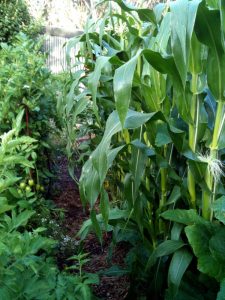 Tall plants like corn and sunflowers can’t be planted on the top of the hugels (they’re too unstable). Typically you grow these on the southern side of the hugel, or in sunken beds.
Tall plants like corn and sunflowers can’t be planted on the top of the hugels (they’re too unstable). Typically you grow these on the southern side of the hugel, or in sunken beds.
I’ve successfully grown corn at the base of the hugels. I grew the corn densely in a single row, with about two metres between each row. The corn on the ends of each failed to fertilise correctly, but the rest of the corn fertisiled well.
The difficulty is that corn creates a lot of shade for the other plants.
In order to grow the corn successfully, I recommend planting the corn in dedicated beds, either in sunken hugels or raised hybrid beds.
I plant corn, pumpkin, sunflowers, and melons in a dedicated sunken hugel.

